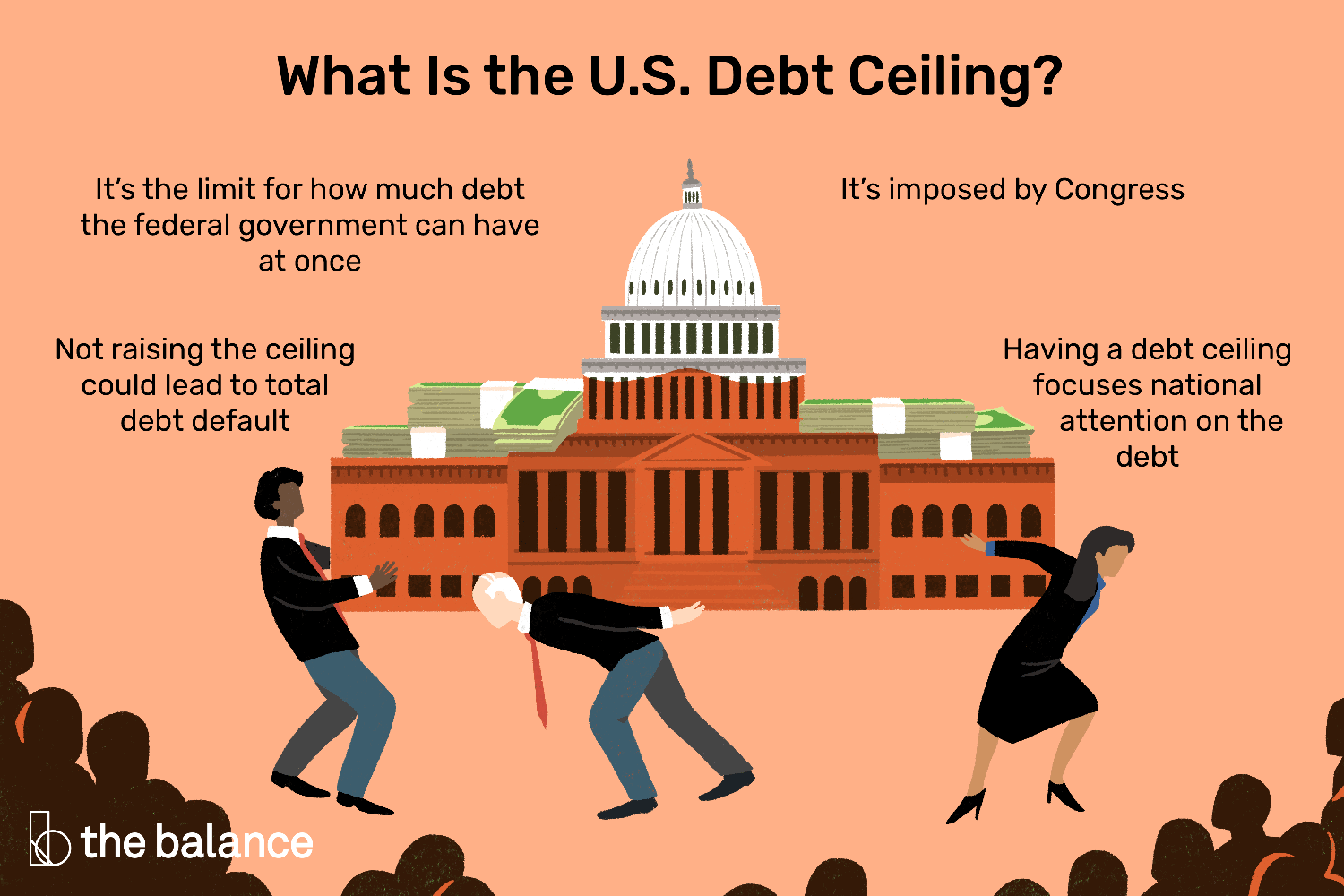
In most countries, a government passes a budget, and if the spending is greater than the taxes collected, it finances the gap by borrowing the money (this is the annual deficit) through the issuing of new government bonds in that amount. In the US, there is a slight quirk. In addition to issuing the bonds needed to finance the deficit, the Congress also needs to pass a law allowing the country to have a total debt that does not exceed some arbitrary number. This is the so-called “debt ceiling”, and it serves no actual purpose normally - Photo: The Balance / Bailey Mariner
The Debt Ceiling Sham
By Nayyer Ali MD

The new GOP controlled House of Representatives intends to take an economic hostage in order to force some sort of concession from the Democrats in the Senate and Joe Biden in the White House. This hostage is an arcane budget law peculiar to the United States called the “debt ceiling”. If the Congress does not pass an increase in the debt ceiling in the next few months, it is theoretically possible the US could default on its debt, and fail to make interest payments on over 30 trillion dollars of US government debt in circulation.
The outcome of a such a failure would be a global economic catastrophe as much of the world economy is anchored by the value and safety of US government bonds. To call that into question, and to put the real possibility of a debt default in play, is grossly irresponsible.
But that’s exactly the point of this gambit by the Republicans, something they tried the last time they ran the House with a Democrat in the White House. It was 2011 and they pushed the debt ceiling standoff as far as they could go, finally settling for a strange deal that forced equal sized cuts in defense and non-defense spending for several years while not touching the major entitlement programs of Social Security, Medicare, and Medicaid.
The Republicans have a highly flexible view of government spending. When they are in the White House, running up the debt with massive spending and tax cuts is perfectly fine. But when a Democrat is in the White House, they run around screaming that the debt is out of control and a threat to the very future existence of the United States, and that massive cuts in spending must be undertaken immediately. The GOP never once threatened to default on the debt to force Trump to cut spending, but they now suddenly feel the need to do so because Biden is President. Their hypocrisy literally has no limits.
In most countries, a government passes a budget, and if the spending is greater than the taxes collected, it finances the gap by borrowing the money (this is the annual deficit) through the issuing of new government bonds in that amount. The total amount of bonds outstanding from all prior issuing is the national debt. In the US, there is a slight quirk. In addition to issuing the bonds needed to finance the deficit, the Congress also needs to pass a law allowing the country to have a total debt that does not exceed some arbitrary number. This is the so-called “debt ceiling”, and it serves no actual purpose normally. In normal times, meaning the decades before 2011, the Congress would simply raise the debt ceiling by an amount that gave the Treasury Department the legal permission to borrow up to that amount. This is the hostage the current gang of Republicans in the House want to take.
However, this raises the obvious point. Why don’t you just pass a balanced budget and then you wouldn’t need to borrow any extra and wouldn’t need to raise the debt ceiling? Good luck with getting the GOP to pass such a budget, they have absolutely no idea how to do that. Actually, they do, they would either have to raise taxes by about a trillion dollars per year and/or cut spending by the same amount. They obviously can’t seriously suggest either, it would kill them with the voters.
This is also why their hostage-taking is such an empty gesture. They are screaming about the debt, they refuse to contemplate any increase in taxes, and yet they are unable to specify a single item in the budget they would like to cut. The US government spends over 80% of its dollars on Social Security, healthcare (Medicare, Medicaid, Veteran’s Administration, etc.), and defense. The rest is small change items.
The more serious question is does the US have a long-term fiscal problem that threatens the country? The short answer to that is not really. The only real problem it has is that taxes are probably a little too light by about 1% of GDP each year. To understand the problem, start by appreciating not just how much debt the country has, but how big the economy is. The US economy now produces each year 26 trillion dollars in GDP. The total amount of outstanding debt is now roughly 30 trillion dollars. At about 115% of GDP, this seems pretty big, but it is actually a much smaller number than it appears. Of that 30 trillion, 6 trillion is actually owned by the Federal government itself in the form of various trust funds (Social Security, Veteran’s benefits, Medicare, etc.). Another 6 trillion is owned by the Federal Reserve, which is the nation’s central bank. Interest payments collected on that 6 trillion dollars are booked as profits by the Federal Reserve and sent back to the US Treasury, so basically that debt doesn’t exist. It was financially extinguished when the Federal Reserve bought that debt either to fight the Great Recession in the last decade, or to fund the massive spending needed to keep the economy afloat during the COVID pandemic. The Federal Reserve has the power to buy debt by simply creating money through an electronic transaction (essentially printing the money).
This means that the real debt is only about 18 trillion dollars, or about 70% of GDP. This is still a much higher number than it was in 1980 or 2000, but between the Great Recession and COVID the government had to borrow an enormous amount of money in the last 15 years. Going forward what is needed is not a debt default by the Republicans. Instead, the debt needs to grow at a pace slower than the growth of the economy and the effects of inflation together. If that happens over the next 20 years, that debt to GDP ratio will slowly whittle back down to a more acceptable number, giving future governments fiscal space to spend wildly if another economic shock hits.
What would such a budget policy look like? The key is to raise taxes moderately to fund the rising costs of Social Security and Medicare, and to restrain spending growth to somewhat less than the growth rate of the economy. Keeping the growth rate of healthcare spending from spinning wildly out of control is also important. This is not rocket science. It is making sound fiscal choices based on the obvious priorities of the American people. A sane Republican party would be a good partner in negotiating these constraints, but the current iteration is unhinged and deserves to be ignored.

